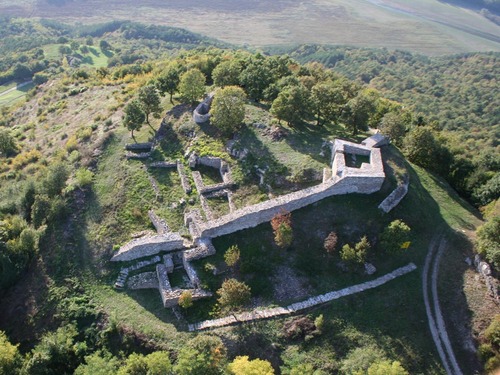| Status: | Full |
| Dates: | 29th July 2024 to 18th August 2024 |
| Duration: | 21 days |
| UK Participants: | 6 |
| Location: | Bulgaria – Medieval Fortress Excavation |
| Velislava Chilingirova19 Bulgaria Boulevard, Letnitsa, 5570, BulgariaHost website |
Accommodation: self-catering accommodation
Meals: self-catering, students will be given money to buy their own groceries.
Communication: check with mobile network for coverage
Transport: Airport transfer to placement site organised by the host, public transport available for free time
Flights: Grampus will email students with a flight option that fits within the travel grant and which arrives at a time that suits the host. Students are welcome to look for alternative flights, but the arrival times must match those of the offered flight, and be within the travel grant. Students have to fund their own way to the UK airport
Weather: Hotter than UK summer, can be 30-35 degrees C
GHIC: All participants must apply for a Global Health Insurance Card before the placement, and carry it on them at all times.
The group will be working on the excavations at Hotalich Medieval Fortress and town. The area being focused on is one of the churches in the Necropolis.
Accommodation in Helios apartment in Sevlievo on self catering basis.
Work at Hotalich medieval fortress with experts from Historic museum in Sevlievo
One weekend trip /2 days, 1 night/ to Veliko Tarnovo and Antic Ceramic center in Pavlikeni
Visit to Sofia + 1 night /17 August

Some info about HOTALICH:
The archaeological excavations near Sevlievo started in 1979. Excavations on the site since 2009 have been led by Nadezhda Boteva, archaeologist from the Sevlievo History museum. The site was declared a cultural monument of national importance in 1994.
The excavations have revealed one of the most significant fortifications in the Central Fore-Balkan mountain. The results of the last few seasons show that the construction of the powerful defence system on the hill dates back to the end of the 5-th century and the very beginning of 6-th century. The fortress walls are 1.70 – 2.20 meters thick and have been preserved up to 3 meters in places. The citadel is built using the opus implectum technique.
The flourishing of the fortress during the period 11th – 13th centuries is indisputable. Nearly 90 residential and commercial buildings have been unearthed there to date. Evidence strongly suggests that some of them were 2 floors high. Two Christian churches were also discovered on the site, surrounded by Medieval necropolis which has more than 200 graves.
Cultural activites during the placement might include (could be subject to change):
- Visit to ETARA Open Air Ethnographic museum in Gabrovo
- Antique ceramic in Pavlikeni and Gradat fortress near Kramolin village
- Devetaki Cave
- Lovech and Krushuna waterfalls and Medieval Isihastic rock site
Some photos and a little more information about the fortress and surrounding areas can be found here.
Accommodation: in houses or flats on self-catering basis.
As with most archaeological sites, expect a degree of physical work. As with all our placements, participants are joining partner excavations. These are not UK led excavations. The group will be learning different methods and techniques that are used for this particular site, so must expect differences in how the site is run.
Funding
The Turing grant will cover accommodation, food (3 meals a day), return, flights, insurance, transport to site and supervision. Participants will have to make sure they have their EHI or GHI card and budget for personal purchases and excursions.
This project has been funded with support from the Turing scheme, funded by the UK government.
This publication [communication] reflects the views only of the author, and Turing cannot be held responsible for any use which may be made of the information contained therein.


